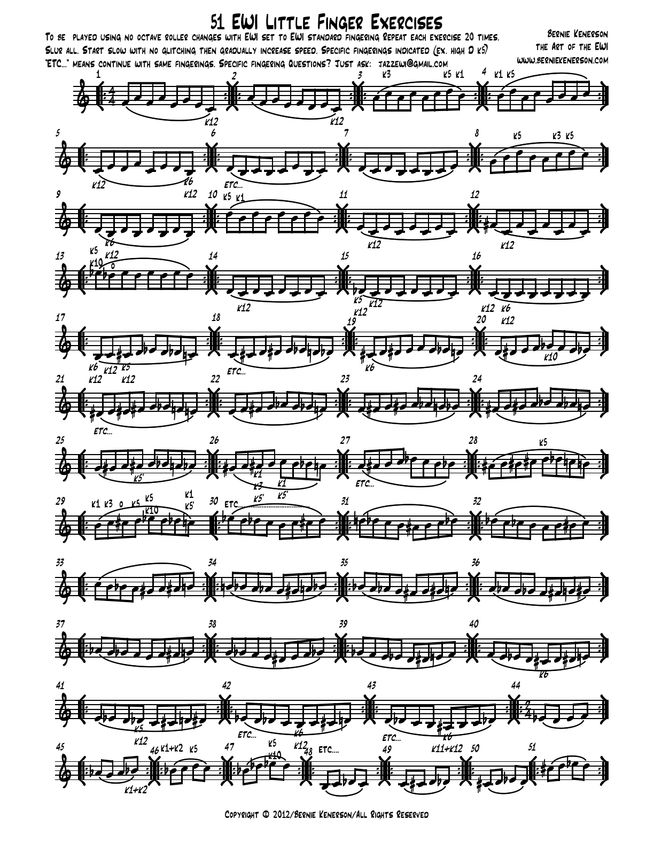
To celebrate the beginning of my 35th year playing electric wind instruments I wrote these 51 EWI Little Finger Exercises. EWI standard fingering setting and little finger technique is crucial to fast, fluid, glitch free EWI technique. EWI has a range of an 11th (Bb to Eb) without making an octave roller change. Don't make octave roller changes (going over the break) when you don't need too. It's also where most glitching occurs because of the slow lazy third (ring) finger. For example, I observe when players play the notes B - C - D - C they finger like in the middle register of the sax (K1 for B, K3 for C, then on octave roller change and 6 fingers go down for the D. That is the worst way to finger these note. There are two better ways and both should be learned. On the high end use (K1 for B, K3 (or better yet K1+K5' for C) then just K5 for D. For the low end use 6 fingers plus little fingers on K6+K12 for B, 6 fingers plus little fingers on K12 for C and normal 6 finger D. If I'm playing a passage that is not ascending above Eb/D# I use little finger fingerings and don't go over the break (octave roller change). If I'm playing a passage that is not descending below B (and sometime Bb) I use little finger fingerings and don't go over the break (octave roller change). Remember that with EWI Standard Fingering setting K5 raises a note a 1/2 step, K10 raises a note a 1/2 step, K5+K10 raises a note a whole step. That's it on raising. K6 lowers a note a 1/2 step, K10 lowers a note a half step, K6+K11 lowers a note a whole step. K12 lowers a note a whole step, K6+K12 lowers a minor third (three 1/2 steps) and K6+K11+K12 lowers a major third (four 1/2 steps). For K11+K12 get your right hand little finger touching both. If you have specific fingering questions just ask. I'm looking forward to the next 35 years!!!
